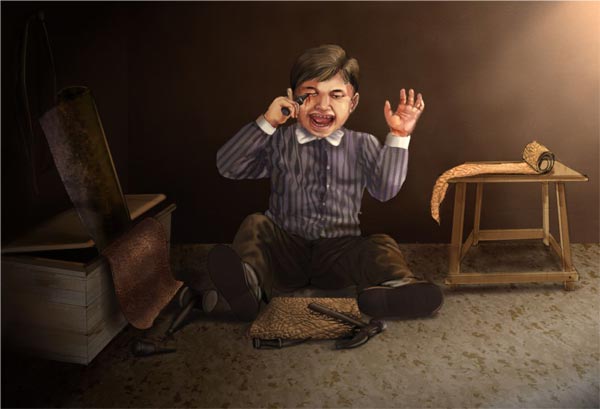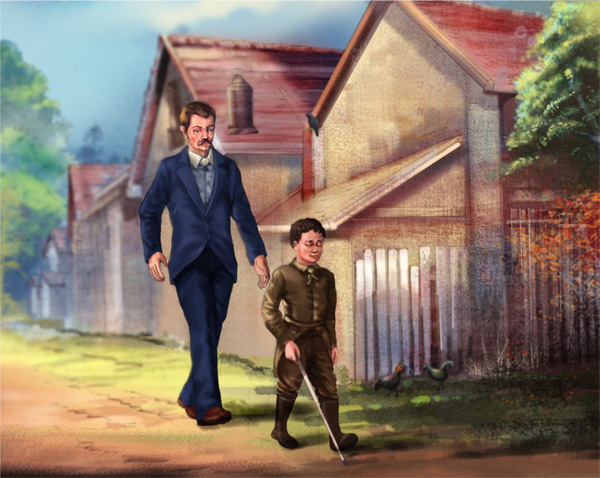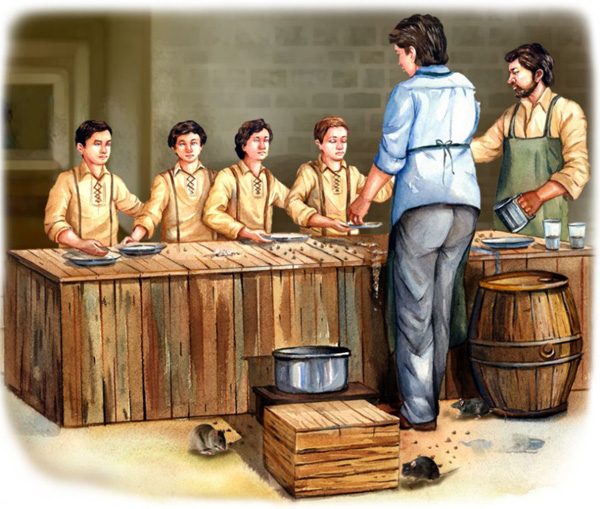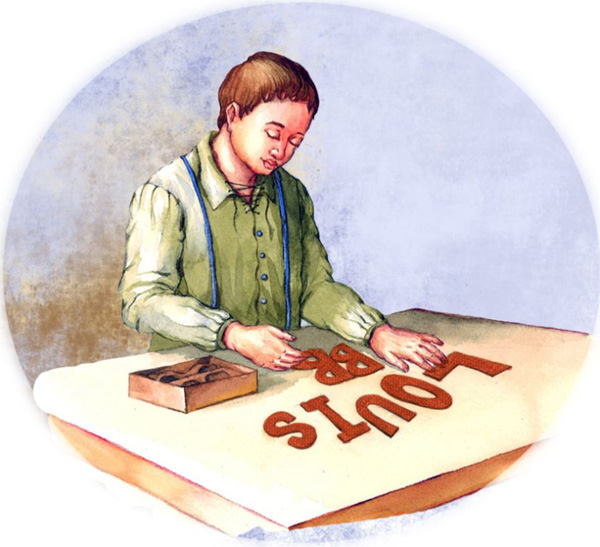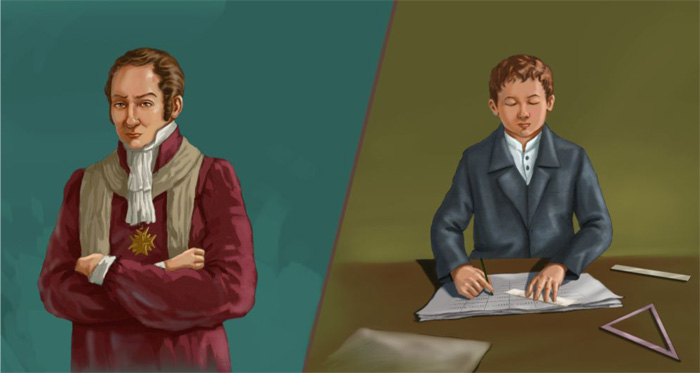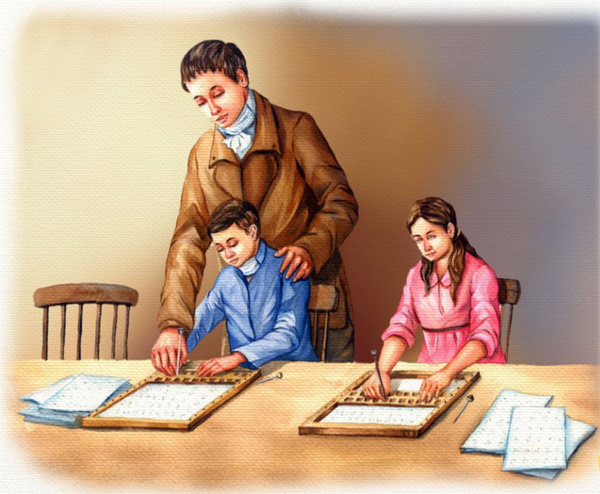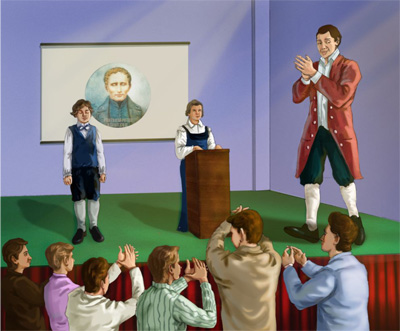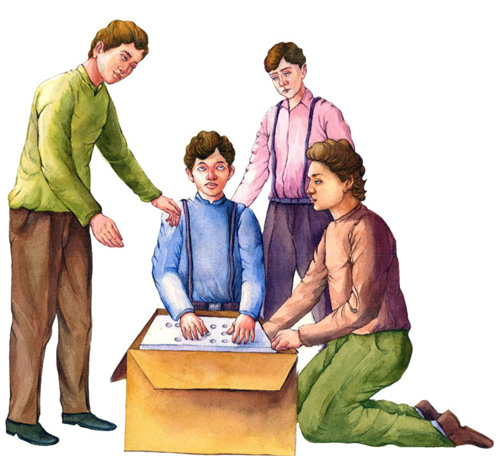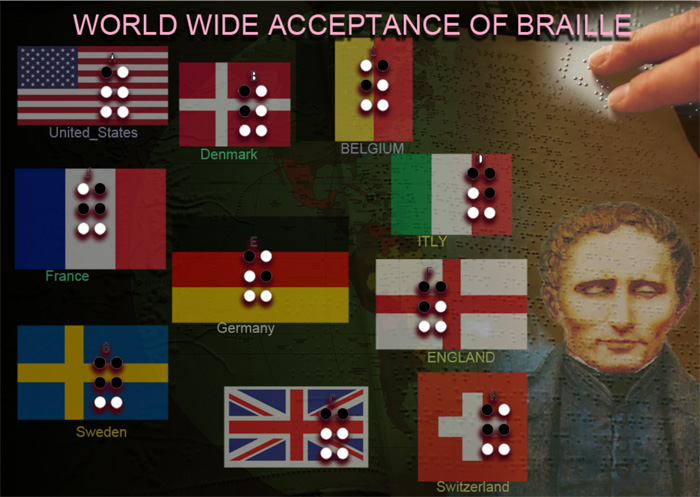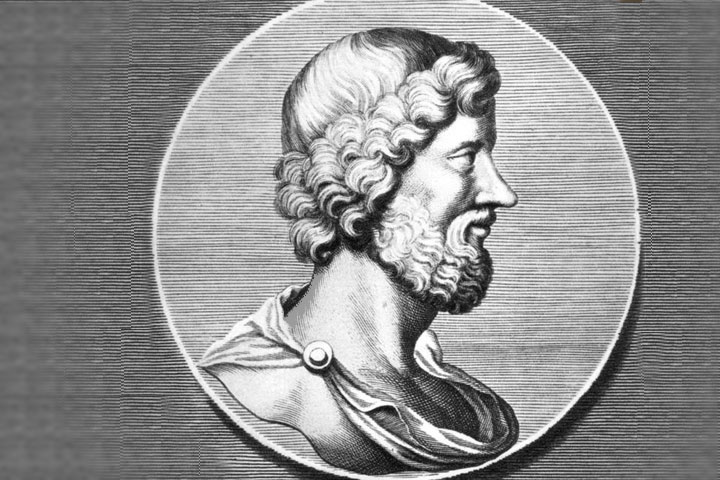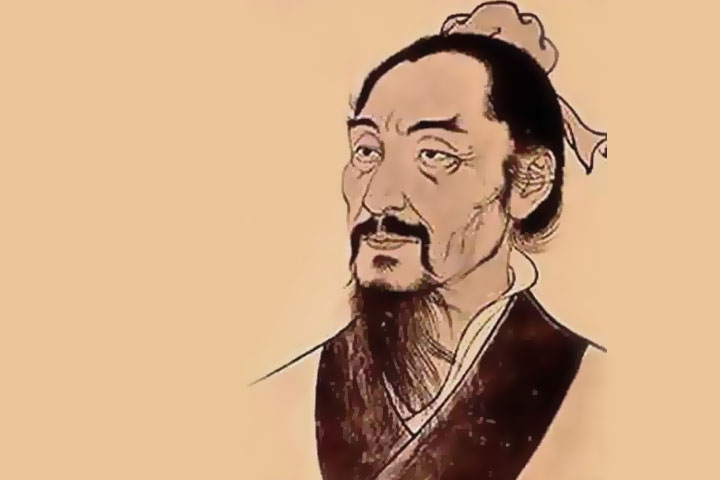
Introduction
“AND JESUS ANSWERED AND SAID UNTO HIM, WHAT WILL THOU THAT ‘I SHOULD DO UNTO THEE? THE BLIND MAN SAID UNTO HIM, LORD, THAT I MIGHT RECEIVE MY SIGHT.”
-QUOTE FROM BIBLE.
As a child, each one of us has enjoyed the game of ‘Blind man’s Bluff’. It is a simple game wherein a piece of cloth is tied around a child’s eye, and the other children clap their hands to distract his attention. The child has to carefully listen to their sounds and try to catch them. What a thrilling and an exciting game? But ever considered the plight of millions of those people, whose lives are plunged into darkness forever and each day they are forced to play the game of Blind man’s Bluff, not for excitement but for their very survival. Worse is, their disability to read and write makes them more vulnerable, thereby depriving them of earning a decent livelihood and leading an independent life.
Many years ago all these unfortunate millions had no choice but to accept their visual disability as a cruel fate. But someone, somewhere across the globe decided to take fate in his own hands and vowed to live his life with dignity. Blinded in an accident at a very young age, this man dedicated his entire life for developing a unique system of reading and writing for the blinds and transformed the lives of the millions.
Who is he, what system did he innovate and was he successful in his noble endeavour. To answer these, let us read further to know more about this ordinary, yet, so marvelous a personality called LOUIS BRAILLE, the inventor of the Braille system of reading and writing used by the visually impaired. His unique invention has developed an important and an invaluable tool of learning and communication for the blinds which have been adapted for languages worldwide.
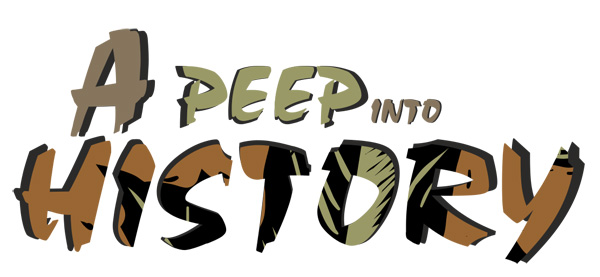
A Peep into History
The chain of events which led to the discovery of braille began after King Louis IX of France suffered a massive defeat in the Sixth Crusade. King Louis was a pious man and after his defeat, he returned to Paris. His interest in charity grew and he built a formal School for the Blind, the first of its kind in the world in the year 1260, ‘Quinze-Vingts’. It provided the basic amenities to the blind Parisians, which was a boon to them. King Louis attempted another crusade and almost at once succumbed to mysterious fever. A few years later a city was named after him and in 1297, the Church canonized him as ‘St. Louis’.

The Second Link to Braille
Paris is not only the Capital of France but also one of the most beautiful city in the world. St. Ovid’s Fair is one of Paris’ popular religious street festivals. The fair runs each year from August 14 to September 15 and exhibits a number of merchandise, puppet shows, jugglers, animal acts and scores of variety shows. In the year 1771, a young man Valentin Huay, visited the fair and stopped at a café for lunch. An incident at the fair shook not only his life but also changed the lives of millions of blind people forever.
A group of eight blind men from Quinze-Vingts were performing a comedy show and acting like musicians. They wore caps, huge cardboard glasses, and one of them wore a red dress and donkey’s ears hung from the ceiling, suspended on a perch shaped like a peacock. The ‘musicians’ performed like a clown and the crowd was roaring with laughter as the show was a great hit. Valentin Huay, however, had different feelings and was so sickened by the act that he left the café without finishing his lunch. His feelings for the blind people later encouraged him to improvise their living condition.
Valentin Huay, who was born into a weaver’s family received education in a monastery from Monks and became a skilled linguist who could speak ten different languages fluently, including Hebrew and Greek. In 1783, he was named interpreter to the King of France.
One day Valentin met a beggar, Francosis Lesuer, who was blind since birth. Valentin taught him to read by using wooden letters. Within a few months Francosis became master in primary education and stunned France’s top scholars when Valentin Hauy brought him for a small demonstration. The success encouraged Valentin further and he opened a school in his own house. He devised his own methods and system, like embossed books, to educate the blinds. Slowly and gradually, many blind pupils became his students and his school gathered much reputation. He made rapid progress in his mission to educate the blind and was the founder of the Royal Institution for the Young Blind in Paris, in the year 1784.

Two Decades Later
Simon Rene Braille and his wife Monique lived on three hectares of land and vineyards in Coupvray, France, a small town located in the East of Paris. Simon Rene was a saddle-maker and maintained a successful enterprise as a leatherer and maker of horse tracks. They were blessed with three children, a daughter, Monique Catherine Josephine Braille in the year 1793, followed by a son, Louis Simon Braille, in the year 1795 and again a daughter, Marie Celine Braille, in the year 1797. Simon was ecstatic when he learnt that his wife was expecting their fourth child and the family proudly welcomed a new addition to their family - Louis Braille, on January 4, 1809.
An infant Louis would often crawl to his father’s workshop which was located in their home. Monique really had a hard time keeping him away from the room, but the naughty toddler always found his father’s workshop very attractive. Soon time flew and Louis began to take his first steps. This is the age when kids love to explore their surroundings and Louis was no different. He would spend much of his time in his father’s workshop, playing and toying with some of the tools.
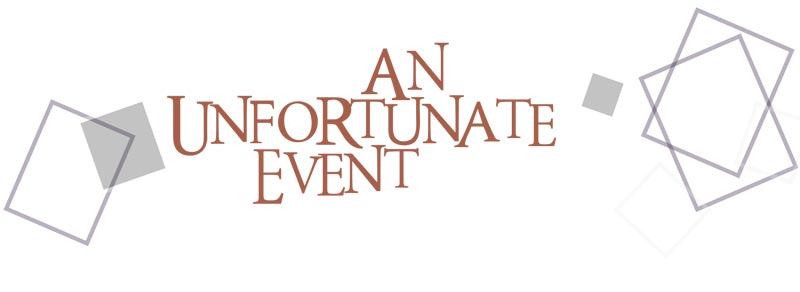
An Unfortunate Event
As Louis was growing up, France was going through a major political conflict. Napoleon decided to invade Russia and political crisis affected the town where Simon and his family resided.
Louis had just turned three when an unfortunate event changed his life. On the fateful day, when the news spread about Napoleon’s invasion on Russia, Louis’s father left the workshop unattended to gather more information about Napoleon’s invasion from his neighbours and friends. Louis took full advantage of the situation and entered the room unnoticed. He began playing with the tools and wanted to copy his father’s craft. He picked up an awl and tried hard to make holes in the piece of leather, and in the process the awl glanced across the hard leather and struck him in one of his eyes, wounding it badly.
Simon rushed him to the local physician who patched the affected eye and recommended him to a renowned surgeon in Paris. But the damage was too severe and no treatment could save his eye. Louis suffered in pain for weeks as the infection spread to his other eye. Though he was under medication, his ordeal was far from over. For two years he survived the torment, and by the age of five he completely lost sight in both his eyes. To make matters worse, Napoleon’s constant war with the rest of Europe caused their town to be ravaged by soldiers and army. For over two years, i.e. from 1814 to 1816, Simon’s small home served as a camp for the soldiers. Their growing demands for food and lodging caused severe hardship for the whole town.
Despite of the remorse conditions, Louis’s parents gave him full support and made great efforts to raise him in a normal way. His father hewed canes for him, which helped him to navigate the paths of the village and the countryside. Louis’ determination to overcome his visual disability was tremendous and he grew up at ease and peacefully.

Academic Inclination
The tragic event and the subsequent loss of his sight did not hamper the progress of Louis’ youthful intelligence and he went to the village school at Coupvray He was intelligent and creative and did well in his studies. His extraordinary skills needed an environment where his talents could prosper. He studied at Coupvray until the age of ten. His school master, Antoine Becheret and the local priest, Abbe Jacques Palluy knew Louis Braille well and approached a rich nobleman for scholarship. The nobleman, Marquis Dwellers who had seen Valentin Huay’s students, agreed to write to the current director of a reputed school in Paris. The Director, Sebastian Guillie agreed and finally Louis was granted scholarship in Royal Institution for the Young Blind, at 68, rue Saint-Victor, Paris in the year 1819.
The Institute was an old seminary and was used as a prison for uncooperative priests until 1815 and accommodated the blind from the year 1816. It was an underfunded, uncomfortable, unhealthy place and smelled of mildew. Though the school was in a ramshackle state, it provided the much needed stability for the blind children to learn and associate themselves together. The year Louis Braille was admitted, Guillie referred to blind students as “degraded beings condemned to vegetate on the earth”.
For teaching, Guillie would instruct the older students to teach the younger ones. Guillie received a small stipend for the older students ‘instructional time’ from the government which he cleverly pocketed. The living conditions were pathetic as students got to bath only once in a month, stayed in cold and damp rooms and were served poor quality of food, mostly beans and porridge. The drinking water was muddy and unfiltered and if anybody raised objection he would be punished by way of solitary confinement and a dinner of dry bread. However, Louis adapted himself beautifully to the adverse situations and made friends quickly. Gabriel Gauthier, who was one year senior to Louis Braille became his best friend.
The school’s founder, Valentin Hauy, a committed philanthropist, had designed a system of reading for the blinds. The books were embossed with raised imprints of Latin letters so that the readers could run their fingers along the line and comprehend slowly what the book conveyed. Hauy’s books were available in different weights and sizes but were also very expensive. The school could afford only 14 books and Louis spent a lot of time comprehending them. By the time he finished reading one sentence he almost forgot what was the beginning of sentence all about? He also discovered that the books only enabled the blind to read and not write. He pondered that there must be a better way for a blind person to read the words as quickly as a sighted person. Young Louis missed his parents and expressed his desire to write letters to them. His father then designed alphabets from bits of thick leather. It was a slow procedure but it enabled Louis to trace the letters easily and frame his first sentence.
Despite of their limitations, Louis read Hauy’s books repeatedly and paid equal attention to oral instructions by his teachers. He was proficient in literary and scientific essays which depicted his extreme clear concepts and imagination.
Valentin Hauy, now an old man of 76 years, had not been in contact with the school for years. After his dismissal by Napoleon in 1802 he had left France, accompanied by one of his best student, Alexandre Fournier and spent over a decade in exile, working with the blind people. Upon his return to France, Valentin was exhausted and nearly blind. He was banned from the school by the treacherous Guillie.
The subsequent year i.e. in 1822, Valentin Hauy passed away at the age of 77. Louis Braille was one of a small group from the institution who attended Valentin’s humble funeral. Valentin Huay was immortalized in the stone carving adorning New York’s Riverside Church.

The Barbier System
Around the same time, the Institute got a new headmaster- Alexandre-Rene Pignier who found the state of teaching chaotic. He agreed with Louis’ views that Hauy’s system allowed to only read and it was impossible to write fast or take notes. He had heard about Charles Barbier’s ‘night writing’ artillery code and wanted to know more about it.
Charles Barbier De la Serre was a French National who graduated from the Brienne Military School as Artillery Captain. He fled the military and spent some time in the United States working as a land surveyor and returned back to France to join Napoleon’s army. His invention was based on Napoleon’s demand for a code which the soldiers could use to communicate silently without using light at night. However, his system was never used by the army.
Barbier met the students of the Institute for the first time at the Museum of Science and Industry where he was exhibiting his device that enabled the writer to create messages in the dark. Barbier’s system was a bit complicated and was related to the Polybius Square, in which a two-digit code represents a single alphabet. The alphabet was represented by two columns of dots, in which the first column had one to six dots denoting the row in the square and the second had one to six dots denoting the column. The dashes took up a lot of space on a page and each page could accommodate only one or two sentences.

As many as twelve dots i.e. two columns of 6 were needed to represent one symbol. In order to draw the dots evenly, Barbier made special tools. The main tool was to press on the paper six slots, which cut into a wooden support, onto which was a closed grid whose windows served as a guide.
When Barbier demonstrated his system in the Institute, it received an overwhelming response. The headmaster, Alexandre Pignier found it very practical as he realized that the Barbier system could help students write their symbols using a special board and writing ink, and a pointed tool called the stylus.
Louis Braille was amazed when he first touched the dots of the night writing samples. Louis had often played with tactile writing at home, tried leather in various shapes and arranged upholstery pins to develop a tactile method but had not succeeded. However, now he knew that he had found a medium to innovate his own system of reading and writing. The Barbier system was immediately implemented in the Institute as an accessory to learning.

Braille's Career and his Inventions
Louis Braille was around twelve years when the Barbier system was introduced in the institution. Although Louis was impressed with Barbier’s system, he had suggestions to improve it further. He was quick to identify the problems in the Barbier System. The cells were bigger than what the fingertips could cover. The cells stood for 36 basic sounds instead of letters. There was no way to identify punctuation marks, numbers or musical signs and there were horizontal dashes along with the dots.
On his next vacation at home, Louis spent considerable time working on finding a way to improvise on Barbier’s system. When he returned to school, he met Captain Barbier to discuss his ideas to improve the code. The Captain who was in his mid-fifties felt humiliated and annoyed on being questioned by someone who was so young and inexperienced. However, Louis did not lose courage and began devoting his time in trials and experimenting with papers, stylus, rulers and other tools. Even on holidays, Louis would spend hours in his room either experimenting or doing research work. He worked tirelessly on his ideas, as his main motive was to simplify the Barbier system and maximize its efficiency. Alexandre Pignier noted, “Braille was occupied for part of the day with his class but devoted wholeheartedly to trials relating to his method, early in the morning and sometimes he even woke at night. He would be seen going to the dormitory, bearing paper, stylus, ruler, tools amidst which he would fall asleep. He also concerned himself with his research at home during holiday and when the country folk smiled scornfully seeing him ‘pecking the paper’ as they called it, little did they realize that from this occupation would emerge an invention so powerful to the blind and so honorable to the author.”
When Louis turned 14, he began his career as a foreman for workshop making braid footwear. The blind students were introduced to this craft in the institution to make their fingers more nimble and flexible. Louis proved excellent in this craft and received lots of appreciation from other pupils and Alexandre Pignier.
After three years of research and experiments, at the age of 16, Louis came out with his own method of reading and writing. His method consisted of patterns of raised dots which were arranged in a cell of six dots in a 3X2 configuration and each cell symbolized a letter, a number or a punctuation mark, including a few dashes as well. Louis halved the height of the signs to adapt perfectly to the fingertips. His new alphabet was received enthusiastically by other students and Alexandre Pignier co-operated by ordering special slates which Louis had designed using Brabier’s original one. Gabriel Gauthier, Louis’s best friend was the first person ever to read braille.
The popularity of Louis Braille’s discovery did not help in making the lives of students easier as France was going through bad times. The ration provided to the Institute was reduced considerably and the students were forced to survive on bread and soup. The teachers were reluctant to accept the new code as they found it very alien.

A Role Model
Louis Braille received numerous prizes for his academic achievements between 1820 and 1825. He excelled in French Grammar, Geography, Arithmetic, History, Logic, Geometry and Algebra. At the age of 19 he was appointed as a tutor to teach Grammar, History, Geography, Arithmetic, Algebra, Geometry and other subjects.
Louis’ first love was music and he regularly attended organ and cellist classes taught by Jean Nicholas Marrigues. He proved to be an excellent student in the music classes too and became a successful musician. He was successful in intellectual and manual disciplines. He was also appointed to assist Jean to teach piano and cello and received certain monetary benefits from the same.
He truly proved as a role model for other pupils and the cult of his personality grew among the blind community. Alexandre Pignier was impressed by Louis’ intelligence and quoted, “He showed promise in domains, but especially in Science. His literary and scientific essays did not merely contain precise thoughts; they stood out for an extreme precision of concepts, expressed in a clear and correct style. Imagination is contained therein, but this was always led by a sense of judgement.”

First Books in Braille
When Louis turned 20, he modified his alphabets to strive for excellence. His second method enabled the transcription of the alphabets, numbers, algebraic symbols, punctuation marks and musical notes. He published his book on the new system “Method of Writing Words, Music, and Plain Songs by Means of Dots, for Use by the Blind and Arranged for them”. A few years later, he along with Gabriel Gauthier and another blind friend Hippolyte Coltat, became the first blind professors at the Institute. All the three teachers used Louis’s system. By this time he had eliminated the lines, except for the dot which were more appropriate to the touch of a finger.
Louis continued with his profession as a professor and enjoyed teaching other blind pupils. His life suffered a major setback when he lost his father at the age of 22. Before his demise, Simon had his eldest son write a letter to Alexandre Pignier requesting him that braille should not be abandoned by the institution. Pignier was moved by the request and considered it as a sacred legacy. Since Louis was very good in music, Pignier recommended him to play the organ for Churches all over France.
Louis was not only an efficient teacher but also very popular among his friends. He was very generous with both time and money, as he regularly helped his students financially for buying warm clothes and better food. He also saved money to buy himself a piano so he could practise at wish.
Living in unhealthy conditions at the school and surviving on an unhealthy diet caused respiratory ailments to Louis. On further diagnosis, it revealed tuberculosis. Louis was barely 26 years old and the diagnosis did not surprise him, as for years, many students had fallen prey to the deadly disease. A visitor to the school had even complained that students could rarely stand for a long time without coughing and wheezing.

Invention of the "Braille Print" System
Deteriorating health, near fatal collapses, teaching load and playing organ for Churches did not hamper Louis’ drive to improvise his code. He invented Raphigraphy, a system which represented the alphabet with large prints letters composed of Braille’s dots. The letter “I” alone required a braille user to punch 16 dots. Another blind inventor, Pierre Foucault was impressed by Louis Braille’s discovery. He invented a machine called a “piston board” to complete the letters drawn with the help of dots.
In the year 1834, Pignier encouraged Louis to demonstrate his code at a seminar hosted by the Paris Exposition of Industry which was attended by visitors from all over the world. King Louis-Philippe of France presided over the meeting and even spoke to Louis about his code. However, the King and the officials of the Ministry who supervised the school failed to understand Louis Braille’s discovery.
Failure to recognize the code by the top officials of the Ministry encouraged Louis to improvise it further. He revised the book on the alphabet in the year 1837 and in the same year, students at the school published the first braille textbook in the world; a three volume history of France. It was indeed a commendable job by the students and it depicted their faith in the braille code.

Bitter Taste of Success
The students of the school were ecstatic and found it electrifying to be able to write with greater speed and accuracy by using Louis’s code. However, neither Louis Braille’s code nor the students’ new history of France in braille received any acknowledgement from the school authorities.
In the same year, the assistant director of the school, P. Armand Dufau, a former geography teacher at the Institute, published a book “The Blind : Considerations On Their Physical, Moral and Intellectual State, With A Complete Description Of The Means Suitable to Improve Their Lot Using Instruction And Work” and received an award from Academie Francaise. Dufau was a staunch opponent of Louis Braille as he found that Louis Braille’s code made the blind too independent. Hence, he did not mention the invention of braille in the book.
Dufau was very influential and got a reputed poet and historian Alphonse De Lamartine to inspect the school’s building which was in dilapidated condition. When Alphonse toured the building he was shocked to find it very shabby, small, gloomy and unhygienic with worm-eaten staircase. He made a strong appeal to France’s Chamber of Duties for a new building and gave a very strong quote, “If the whole Assembly was to rise now and go en masse to this place, the vote for this bill would be unanimous!” Alphonse finally succeeded in getting plans approved for a new building.
Louis’ deteriorating health forced him to take a long leave and he left for his home at Coupvray. When he returned he was shocked to discover that Dufau was promoted as a Director and had deleted many popular subjects like History, Latin and Geometry from the syllabus. Dufau also had Alexandre Pignier dismissed from his post as a Head Master because he had a history book translated into braille.
Dufau revolutionized the school’s standard by adopting a British System invented by John Alston of the Asylum for the Blind, Glasgow and completely discarded Louis Braille’s code and methodologies. To enforce the new system he burnt many of the embossed books created by Hauy’s original process and every book printed in braille code. He also made sure to confiscate the slates, stylus and other braille-writing equipment.
However, the students rebelled and behind Dufau’s back wrote braille even without slates. They would send secret messages to each other in braille by using a fork, knitting needles and nails. The older students taught the younger ones braille secretly and if caught, Dufau would punish them harshly. The fire burning in every student’s heart was ready to explode.

Finally, Dufau’s assistant, Joseph Gaudet, who had been monitoring the students, became a staunch supporter of the braille system. He persuaded Dufau to accept the braille code and explained that if powerful people in the government heard that students are defying Dufau’s authority then his job might be at risk. Joseph also reminded that if any student invents something successful, the school and its director too will receive due credit.
When the school shifted to a new building in the year 1843, Armand Dufau was a completely changed man. He personally supplied new braille slate to each student. The students were delighted and sent a petition to the government to nominate Louis Braille for the French Legion of Honor for inventing a system enabling the blind to read and write. The petition was however rejected.
On the opening ceremony of the new building, Dufau proudly described Louis Braille’s system of writing with raised dots and even had students give a demonstration. An official in the audience cried that it was nothing but a trick and that the child writing the braille and the second child reading it back must have memorized the text in advance. To prove its authenticity, Dufau asked the man to give a printed material from his pocket, which turned out to be a theatre ticket and read it out to the student braillist. The little girl reproduced the text in braille and another child who was at a distance, read it fluently before the man could reach his seat. The crowd was convinced and applauded the system with loud cheers and claps for full six minutes.

Synopsis of the System
Louis Braille’s system enabled the visually impaired to read and write with ease. In Grade 2 system he had introduced contractions mainly to reduce space in the text and Grade 3 was introduced as an effective shorthand to write letters, diaries and notes. Thus, the three versions of braille are: Grade 1 - It consists of 26 standard letters and punctuation. It is for those people who are reading braille for the first time, Grade 2 - It consists of 26 standard letters, punctuations and contractions. The contractions are used to reduce space as a braille page cannot fit a large amount of text, Grade 3 - This is a kind of shorthand where the entire words are shortened to a few letters mainly for personal letters, diaries and notes.
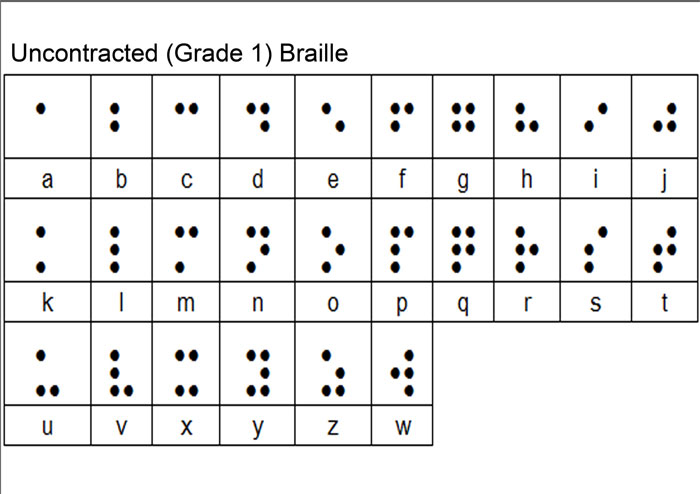
The letters are arranged to show how they are related to one another. The middle row is the same as the top row with a dot in the bottom left corner. The bottom row is the same as the middle row with an extra dot in the bottom right corner.
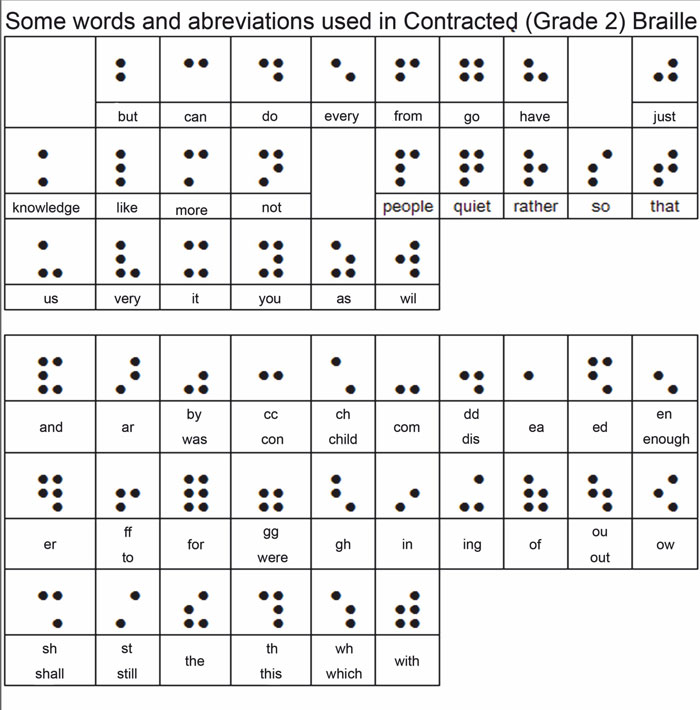
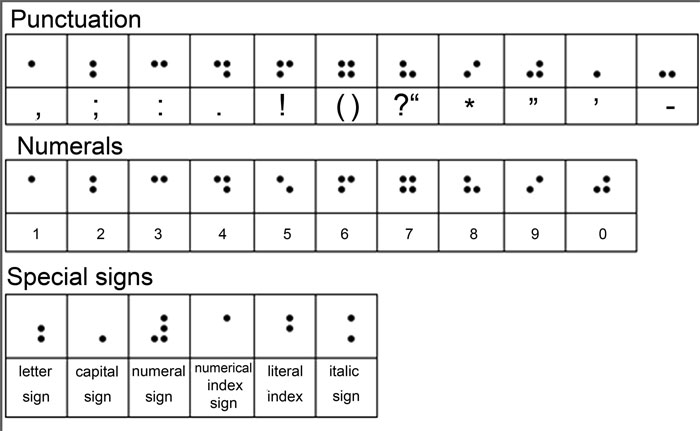

Shadow of Death
Louis Braille’s deteriorating health was a cause of worry for his fellow students but despite his frail health, he continued with his profession of teaching at the school. His illness did not prevent him from pursuing his work and research related to the benefit of the blinds. Since he was an Organist, he played at St. Nicolas des Champs in rue St. Martin and later at the headquarters of the Lazarists Missionaries in rue de Sevres. But his condition worsened and he was forced to reduce his activities.
He spent his last years teaching and implementing his code for books for the school Library. People began calling the dot system as the ‘Braille’ and a number of schools across the world adopted the same name. Dufau published the second edition of his book and also gave extensive coverage to the braille system.
Pignier quoted, “he had no choice but to breathe fresh air in his native countryside where his home was and seek leisure through travel; he was frequently obliged to halt his teachings which tired him and towards the end taught scarcely anything.”
Louis Braille was yet to bask in the glory of his success when the cruel hands of death snatched him away from us. On the evening of 6th January, 1852, just two days past his forty-third birthday, Louis Braille succumbed to tuberculosis at the Institute and not a single newspaper in Paris mentioned his passing.
Alexander Pignier was present with Louis when he breathed his last. He quoted, “When he arrived at the establishment, a certain childlike gravity could be noticed, which went with his fine features and the clever and gentle expression on his face. Growing up, he kept, right up to the end of his life, the same expression of benign gentleness, but in conversation, his features grew animated more often and occasionally took on an air of clever vivaciousness that contrasted with the usual placidity of his face.”
Before his death, Louis Braille made a strange will where he bequeathed a part of his earnings not only to his family but also to the servant who cleaned his room and the night watchman at his school. He also donated his clothes and few personal belongings to his fellow students as mementoes. He made a weird request, instructing his friends to burn a small box in his room without opening. The students however were quite inquisitive to know what the box contained and therefore opened it. It was stuffed with IOUs (I owe you) in braille from students who had borrowed money from Louis. The students were quite moved and burnt the box as per his last wish. Louis’ best friend, Gabriel Gauthier outlived him by only a short time and also died due to tuberculosis. After Louis Braille’s death, Hippolyte Coltat was appointed as the Executor who inherited Louis’s piano.

Global Acceptance of the System
Braille code survived and gradually spread to other parts of the world. In 1854, France accepted braille as the official language for the blinds to communicate. Switzerland was the second country to adopt it. Few other countries initially showed resistance to accept it, but eventually realized the fact that the blind might want to say as well as read, what others have written.
The United Kingdom however, still seemed reluctant to accept the braille code. In England, schools implemented four systems of raised scripts - Moon, Fry, Alston and Gall. Thomas Rhodes Armitage, a wealthy medical practitioner and visually impaired set up a committee of other blind people to evaluate various codes and decide the best one for Britain. After a detailed survey which lasted for two years, the committee unanimously declared that braille system was the best and decided to implement it gradually.
By the end of the 19th century, few other codes were discovered. William Bell Wait, Superintendent of the New York Institute for the Blind, advocated a code called “New York Point” which was discovered in 1868. The system was a cell two dots high with different degree of width and was used for years in magazines. The first American school to adopt braille code was “The Missouri School for the Blind” in St. Louis. The school’s official member, Dr. Simon Pollak, toured France and was impressed by the braille system and the school adopted it officially in 1860.
In Germany, around 14 schools gave support to German adaptations and 11 schools for braille in its original form. A turning point came when the Congress convened a meeting in Paris in 1878, for the improvement of the deaf and blind where Hungary, Belgium, Denmark, England, France, Germany, Holland, Italy, Sweden and Switzerland unanimously adopted the original braille system. In 1879, Germany discarded all other methods and adopted only braille.
Helen Keller, the deafblind author, lecturer and political activist quoted, “Braille has been a most precious aid to me in many ways. It made my going to College possible as it was the only method by which I could take notes of lectures. All my examination papers were copied for me in this system. I use Braille as a spider uses its web-to catch the thoughts that flit across my mind for speeches, messages and manuscripts.”

Fame, Honours, Tributes...
Louis Braille’s life was quite short and unexciting. However, his invention was a boon to the millions who were unable to read and write due to visual impairment. But as long as he lived he never received recognition for his work. It was only in 1952, 100 years after his death that his reputation was elevated to a hero’s status. On public demand, his remains were transported from his grave in Coupvray to Pantheon in Paris where France’s national heroes are buried. The mayor of Coupvray raised an objection that since Louis Braille belonged to Coupvray, some of his remains should be preserved in his home town. Keeping in mind the sentimental values, his hands were separated from his arms and re-buried in Coupvray.
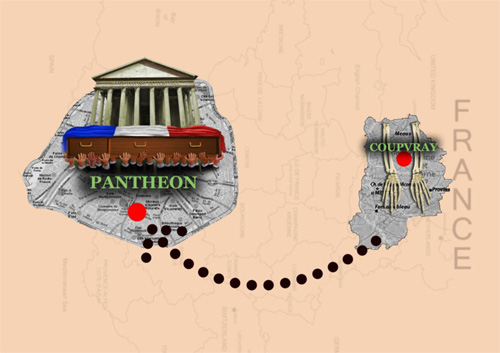
As the coffin was carried through the streets of Paris towards Pantheon, hundreds of white canes tapped behind making it a strange and a heroic procession. Helen Keller gave a speech where she declared, “we, the blind are as indebted to Louis Braille as mankind to Gutenberg, a German goldsmith who introduced printing to Europe.”
It was in 1952, that Pierre Henry published a biography “The Life and work of Louis Braille”. Louis Braille’s home at Coupvray is a renowned historical building and houses the Louis Braille museum. A large bust was erected in the town square which was named as ‘Braille’s Square’.
Joseph Guadet, was one of the first sighted person to learn braille and published a journal titled “Teacher of the Blind” and wrote several books, including a history on Braille’s school. His main aim was to promote Louis’s system and quoted that Louis himself was “far too modest … to insist on the right place for his code in the life of blind. We had to do it for him!”

The Quinze-Vingts still exists today and is a reputed and a high-tech ophthalmology hospital as well as a residence for the blind. The 200th birth anniversary of Louis Braille in 2009 was celebrated throughout the world by organizing exhibitions about his lifestyles and achievements. Belgium and Italy embossed 2-euro coins, India struck a 2 rupee coin and USA struck one dollar coin to commemorate the event.
Braille - An Icon
It is a fact that braille has been adapted into nearly every language on earth and continues to remain a major medium for literacy for the blind worldwide. A French genius who led a simple life and strived hard to discover a system for the blind to read and write truly deserves the status of an icon. Throughout his life Louis Braille never cursed fate or God for his disability to see. In a very short span of time he achieved what others may take years to achieve or may achieve nothing at all. His physical disability was the key to his success. He not only accepted the challenge to lead a normal life but also overcame it with his own research and methods. Somebody has rightly said, “Where there is a will, there is a way.”
To conclude, let us leave the last word to Joseph Gaudet who wrote the following in the “Report on the State of Education and Instruction in the Institution” in 1853, and addressed to Dufau, the Headmaster:
“THE INSTITUTION IS INDEBTED TO LOUIS BRAILLE, BLIND TEACHER, FOR THE INVENTION OF WRITING WITH RAISED DOTS, BY MEANS OF WHICH A BLIND PERSON CAN QUICKLY DRAFT HIS THOUGHTS IN A CLEAR AND PRECISE MANNER. I DO NOT FEAR TO SAY THAT A SIGHTED PERSON COULD NEVER HAVE INVENTED THIS WRITING, FOR IT IS DISPLEASING TO THE EYE, WHICH CAN NEVER READ IT AS FAST AS THE FINGERTIP. IT WAS DISCOVERED BY THE FINGER AND NOT THE EYE: THE SIGHTED PERSON WOULD HAVE DISMISSED IT AS BEING UNSATISFACTORY; THE BLIND PERSON HAS ADOPTED JOYFULLY BECAUSE IT IS APPROPRIATE TO HIS NATURE.”
What we could all learn from Louis Braille’s story is, if you are determined to do something, irrespective of your flaws; making them your strength, you can do it.
Next Biography





